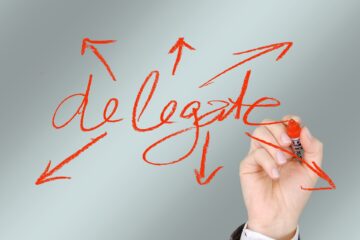![]()
Introduction:
The Theory of SOP was introduced by Montesquieu in his work De l’esprit des lois, while the first thought of separating the legislative power was introduced by John Locke: bounded legislative power, consistent legislative power and federative authority. In 1787, the founding fathers of the United States of America introduced this idea in their constitution. Montesquieu suggested that the fundamental principle be that the same individual should not belong to more than once in the three organs of government. Preferably, this means that ministers would not be chosen. This is a concept which differs between the Indian Government and the U.S.government, where the Secretaries to the President are non-legislative appointees. Separation of powers(SOP) is a concept of constitutional law in which the three branches of government (executive, legislative and judicial) are kept separate. This is also known as the system of checks and balances since each branch has certain powers to check and balance the other divisions.
What is Meant by SOP?
The segregation of powers is an organisational structure in which duties, roles and resources are distributed between groups rather than collectively controlled. It is most closely interlinked with the constitutional structures where the legislative, executive and judicial powers of government are assigned to different bodies.
Historical Background of Theory of SOP
The principle of division of powers originated in ancient Greece and became prominent in the Roman Republic as part of the original Constitution of the Roman Republic. The Aristotle (384-322 BC) claimed in his book “Politics” that: “There are three elements in each constitution for which any serious lawgiver must do what is advantageous to it. The three are, firstly, the deliberative, which addresses anything of popular importance; secondly, the official; and thirdly, the judicial aspect.
At the time of Edward I’s reign (1272-1307) the division of powers originated in England, with the introduction of the Assembly, the King’s Council and the courts. Baron Montesquieu, French Enlightenment political philosopher, introduced the idea of “Montesquieu’s Tripartite System” in England from 1729 to 1731. This word defines the separation of political power between the executive, the legislature and the judiciary. While Montesquieu is credited with the thesis of the SOP, this is claimed by some that he is totally misconstructed what he saw in England
In Ancient India
The origins of SOP can also be seen in the Vedas. Narad Smiriti has the basic idea of the SOP. In those days, Deewan was the president of the Executive Branch. Senapati maintained law and order, and Kaji was the higher official of the judiciary. But their functions were all lower to the King, who has the ultimate authority. King was the one who created the rules and could be estimated to the present form of the rule. Thus, in ancient times, SOP and its functions can also be found.
Branches of SOP
The Legislative Power
The first of the three powers has the duty of enacting laws and overseeing its implementation. It is carried out by the Parliament – i.e. the National and Federal Councils – and the Provincial regimens.
Execution of the legislation is the responsibility of the other 2 branches.
The Executive Power
This branch is accountable for enforcing the legislation. It is composed of the Federal Government, the Federal President and all the federal authorities, including the police and the armed forces.
The Judicial Power (Judiciary)
Judges are administering justice, viz. They rule on conflicts separately and impartially. It is their duty to ensure that the laws are acted in accordance with. Judges can not be ousted and other positions can not be held against their will.
Why is SOP important?
The SOP is essential because it offers a high reliable of checks and balances:
Firstly, it implies that the various branches are in charge of themselves. This is meant to make them responsible to each other – these are ‘checks;’
Second, the division of powers splits authority between the various branches of government – these are the ‘balances.’ Balance is intended to ensure that no person or group of people in government is ‘all-powerful.’ Power is spread, not concentrated in one unit.
That is why we always refer to ‘separation and balance of forces.’ Consequently, the primary aim of the division of powers is to avoid the misuse of power.
Constitutional Articles relating to SOP
Few of the articles in the Indian Constitution emphasises the SOP are as follows:
Article 50
Article 50 imposes a duty on the State to segregate the judiciary from the executive. However, Article 50 falls within the framework of the Directive on State Policy Principles (DPSP) and is therefore not enforceable.
Article 121 and Article 211
The legislators can not look into the actions of a judge of the HC or of the SC. They can do so only in cases of justice.
Articles 122 and 212
The courts can not look into the legitimacy of the actions of the legislatures.
Article 361
The President and the Governors shall enjoy immunity from court proceedings.
Constitutional Outlook of SOP
In India, the concept of the SOP has not been given statutory status. Apart from the concept of the Directive laid down in Article 50, which includes the segregation of the judiciary from the executive, there is no formal and doctrinaire SOP in the constitutional framework.
In Ram Jawaya Kapur v. State of Punjab AIR 1955 SC 549,the SC held:
“The Indian Constitution has not, in fact, accepted the concept of the SOP has in its absolute rigidity, but the roles of the various sections or branches of government have been adequately distinguished and, as a result, it may very well be claimed that our Constitution does not contain the presumption by one body or part of the government of the State of structures that are basically of a particular kind.
In Indira Nehru Gandhi v. Raj Narain AIR 1975( 1590), stated that there is an SOP only in the general context of the Indian Constitution. The strict division of powers as provided for in the American Constitution or in the Australian Constitution does not extend to India. However, the Court held that, while the constituent power is independent of the doctrine of SOP, the history of the basic structure, as established in the case of Kesavananda Bharati v. Kerala State, on ordinary legislative powers, would be an infringement of the principle of SOP.
However, Beg, j. It added that the division of powers was part of the fundamental framework of the Constitution. None of the three independent organs of the Republic will take over the functions delegated to each other. Nor can this structure of the Constitution be modified by reference to Article 368 of the Constitution.
SOP Relevance in Other Countries
Australia
There is no formal SOP between the executive and the legislative, but the judiciary is autonomous. Essentially, the government is divided into three parts, and it is the judiciary that indirectly determines the division of authority between the legislative and the executive.
Denmark
The government is divided into three branches. There is no clear demarcation of powers between the legislature and the executive as opposed to the United States, but the judiciary has been distinct from other institutions.
France
The Constitution of France provides for the SOP, according to the declaration of 1789, of France as an “attachment to human rights” and the principle of national sovereignty.
United Kingdom
It has a weak separation of power, which implies that the concept of the separation of power is applied in a broad sense. Since the roles of all three organs overlap and operate together, too.
United States
The theory of the division of powers is applied in a strict sense.
The powers are conferred on different individuals. Article 1(1) provides that all legislative rights shall be vested in the Congress of the United States of America.
Article II Section 1 addresses all the executive powers granted on the President of the United States of America.
Article III Section 1 provides that judicial powers shall be vested on the Supreme Court and other courts which the Congress can create from time to time.
The term “shall” be used, which means that it is obligatory and must be followed.
Conclusion
The doctrine of SOP can not be enforced exclusively in any contemporary country such as the United States, Nepal, France, etc. Yet this theory is still true today. Our government is a complex structure, and it is very difficult to break it into watertight compartments. Coordination and cooperation between all three branches of government are required to ensure the smooth running of every government.
In my view, this doctrine has a great significance, as it preserves the liberty of the person from the arbitrary rule and prohibits the organs from overthrowing the vital functions of other organs.It is applicable to a certain point in almost all countries.



0 Comments